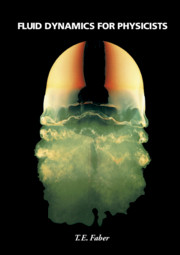7 - Vorticity
Published online by Cambridge University Press: 05 June 2012
Summary
Lines of vorticity
Most of this chapter concerns incompressible flow past solid obstacles, and the drag and lift forces which they experience, at values of the Reynolds Number which are too large compared with unity for the approximations employed in chapter 6, e.g. in the derivation of Stokes's law for the drag force on a solid sphere, to be valid. The effects to be discussed depend critically on the behaviour of boundary layers, and boundary layers, as we have seen, are layers within which the fluid is contaminated by vorticity. To understand these effects properly we need to understand how vorticity behaves, and that is why the chapter has ‘Vorticity’ as its heading.
The properties of free vortex lines, set in otherwise vorticity-free fluid, have already been described in §§4.13 and 4.14, but we can explore the subject of vorticity dynamics in a more general fashion now that we have the Navier–Stokes equation to use as a starting point. The first point to note is that because Ω is defined as the curl of another vector its divergence is necessarily zero everywhere; vorticity, like the electromagnetic fields E and B in free space and like the velocity u of an incompressible fluid, is what is called a solenoidal vector. This means that its spatial variation can be described by continuous field lines whose direction coincides everywhere with the local direction of Ω and whose density is proportional to the magnitude of Ω.
- Type
- Chapter
- Information
- Fluid Dynamics for Physicists , pp. 240 - 288Publisher: Cambridge University PressPrint publication year: 1995



